Causes Of Foot Pain And What You Can Do About It
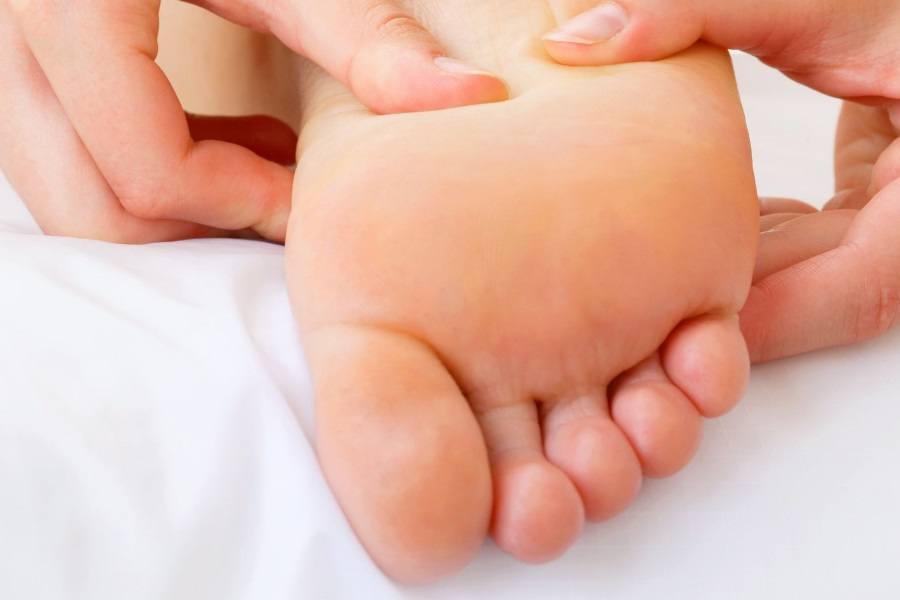
Foot pain is quite common. Why? Well, the fact of the matter is they carry you wherever you want to go and you are constantly using them. Moreover, with a sedentary lifestyle, which a majority of people have grown accustomed to, there is a strong probability that many muscles in your calves and feet remain unused, which can increase the chances of chronic pain and injury.
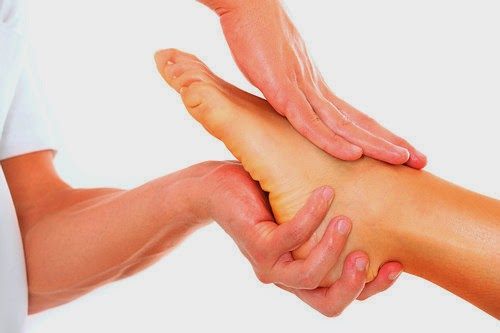
Reasons Why Your Feet Hurt & What You Can Do About It
It is important to understand that there are as many bones in your foot as there are in your hand, which is why you must also pay attention to your foot health. In light of this, mentioned below are some reasons as to why your feet might hurt every day, hampering your ability to stand and inhibit life’s daily processes:
Plantar Fasciitis
According to medical professionals plantar fasciitis is one of the most common causes of foot pain that generally occur in middle ages individuals. Plantar fasciitis is a band of ligament tissues that connect your heel bone with your toes.

The foot condition is caused when this group of tissues is subject to inflammation, which can cause a lot of pain and discomfort. Simply standing up and walking around can cause a lot of sharp pain. This condition isn't common in young folk and children as the tissue quickly heals itself.
On top of that, plantar fasciitis isn't a common in senior citizens because most of them lead an inactive life, which means putting less stress on their heel bones. Being overweight and inactive can also cause plantar fasciitis.
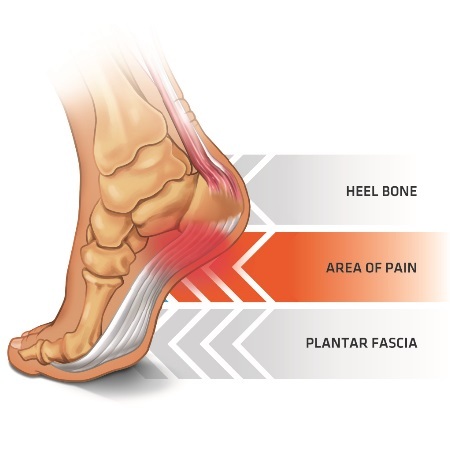
The best way to get rid of the problem is to get a foot massage as frequently as possible. In addition, you can do that by getting an electrical massager that can gently massage your heel bone.
Stretching is also another good way of maintaining the flexibility and strength of your heel bone. More often than not, people only massage the bottom of their feet and ignore than plantar fasciitis ligament, which start the muscles in the calf all the way to their toes.
Deformities Such As Bunions And Hammertoes
Both these deformities are painful and are often genetic. However, you have to understand you can exasperate the condition by wearing tight shoes, not getting enough foot massages and not using toe separators. Bunions are the deformity of the big toes while hammertoes pertain to your smaller toes.
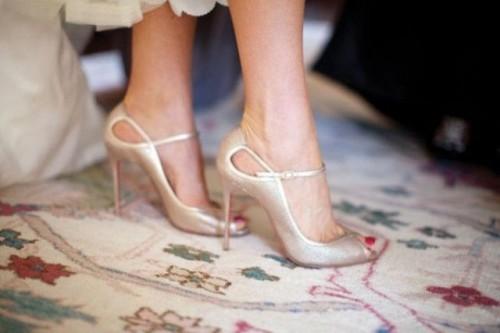
The joints in your feet can gradually become agonizing when the shoes you wear keep on rubbing your big toes and smaller toes together, which can also lead to inflammation, redness of the feet and excessive swelling.
When talking about bunions, an oddly shaped, but painful bump form at the bottom of the big toes, which at times may also cause the bit toe to lean diagonally towards the toes on the right or left of the big toe.

Hammertoes occur when your smaller toes lose strength and the tendons become weak, putting more stress on your joints. This can also cause your toes to stick upright against the joint of that toes, which can hurt bad.
The best way to relieve the symptoms and avoid these conditions is to always wear shoes that perfectly fit you. To reduce the chances of developing hammertoes and bunions it is important to wear shoes that are designed to have wider toe space.
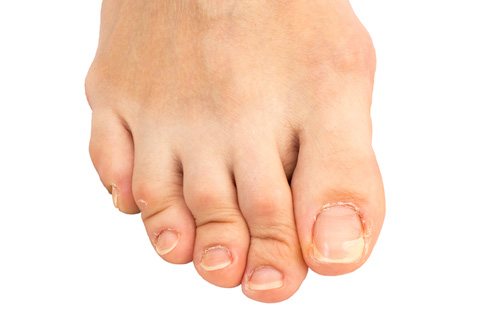
It is important to that the show you wear has about half an inch of space between the longest toe after the big toe and the end of the shoe. Wearing tight shoes can develop these symptoms and pain on the outside of the foot as well.
Calluses
While it is true that many people view calluses as unsightly region of thick skin on their feet, there is actually a reason why they form so often. Calluses can hurt when you stand up and walk; however, they are also the feet’s pressure points.
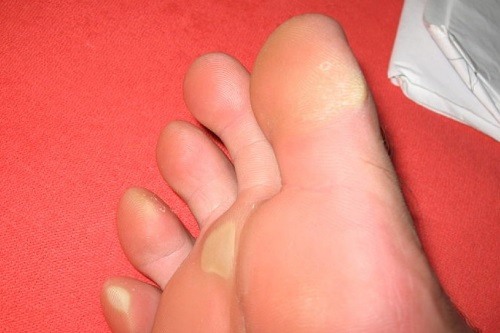
According to research, it was also identified that calluses is your body’s way of helping prevent the development of painful blisters. If it weren’t for the calluses formed on your feet, the friction formed by constantly moving around as well as the constant stress you put on your feet, will eventually irritate the skin on your feet and form blisters, which are more painful than calluses.
Blisters are fluid filled, small bubbles that hurt when you put pressure on them and hurt even more if you pop them.
Nevertheless, the fact is calluses formed on the heels, on the side of your big toe, at the balls of your feet or atop your bunions or hammertoes can be painful, and can keep you from walking for very long. So, what can you do about it? The fix is easy. All you have to do is soak your feet in lukewarm water, softening the calluses.
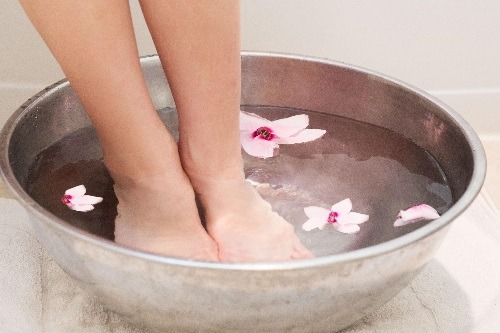
After you soften them, gently dry your feet and apply a moisturizer that has a high amount of glycolic acid. You can also use moisturizers that are made using urea or lactic acid. These are some powerful ingredient that can reduce the occurrence of calluses.
However, if the callus formation on your foot is rather larger and hurt a lot, it is wise to seek medical assistance. So, if this happen, do not hesitate to fix an appointment with your dermatologist or a podiatrist. These professionals will surgically remove the callus formation.
Achilles Tendonitis
The Achilles tendon is connected to the heel bone, and is located at the back of the foot. This tendon can often be inflamed if you end up overusing it. The inflamed ligament is what causes a condition that is known as Achilles tendonitis.
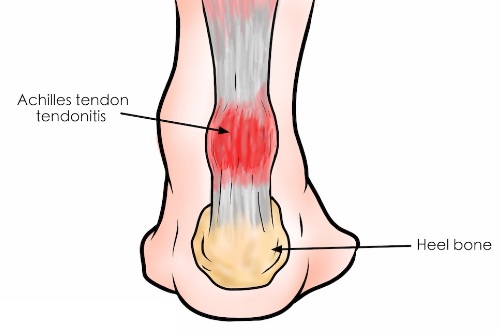
This foot condition is more common in athletes, especially runners. This type of foot pain is also common in women who wear high heels all the time.
Other potential reasons why an individual may suffer with Achilles tendonitis aren't that common, but include diseases such as gout, inflammatory complications and rheumatoid arthritis.
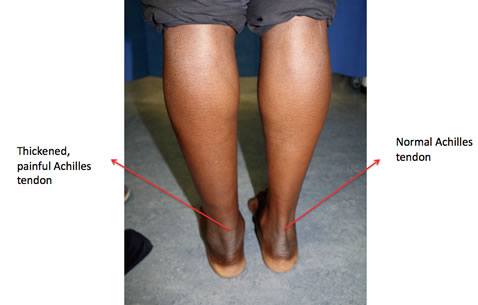
The best way to ease the pain in your tendon is to ice to rest the foot, ice the area and then repeat the process. You have to act fast when you experience this sort of foot pain and it is important to manage the condition sooner rather than delaying treatment.
People with Achilles tendonitis should not put pressure on the affected foot and refrain from performing activities that can result in putting a lot of stress on the foot. Rest it for a couple for a week or a month.
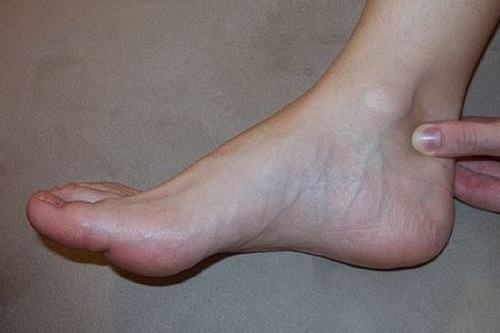
As soon as you start feeling a prickling sensation followed by a bit of pain, immediately ice the area. Along with this simple remedy, you can also take over-the-counter painkillers. Medications prescribed by doctors; that commonly include non-steroidal inflammatory tablets, can help lessen the inflammation and help with the pain.
Morton’s Neuroma
Morton’s neuroma is painful foot condition where the ball beneath the big toe of your foot radiate pain throughout your toes – primarily the third and fourth. It is an uneasy and uncomfortably feeling, followed by pain.
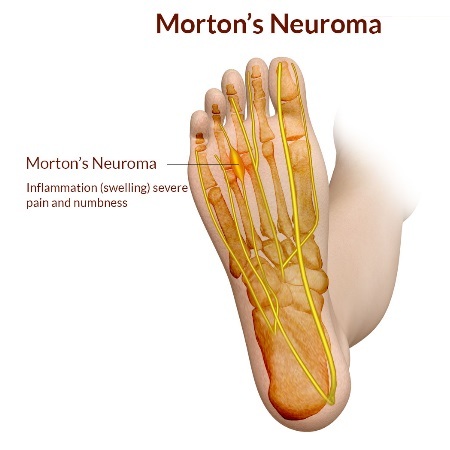
It almost feels as if you’re walking bare foot on a bunch of tiny pebbles or a standing on a sharp stone. Women who constantly wear high heels have a greater chance of developing Morton’s neuroma. This is pain in ball of foot can also be caused a variety of other things such high-impact activities such as playing football, tennis, heavy squatting, running, etc.
A lot of walking can also cause this disorder. The fact that your foot repeatedly pounds the hard surface can damage the tiny nerves inside the ball of your foot, which in turn radiates towards your toes. Other potential foot conditions that can lead to the development of this disorder include bunions, hammertoes, people with flat feet and those who have high foot arches.
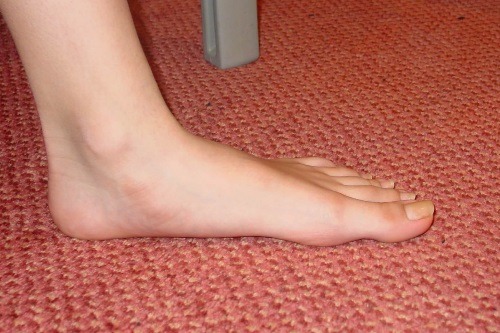
The best solution to this complication is buy a pair of new shoes, getting custom made orthotics, and your doctor may prescribe cortisone injections. The problem is diagnosed via an X-ray of the affected foot and to rule to the possibility of any foot problem.
Next, the medical professional will suggest you have an MRI and ultra sound, which can help identify tiny nerves and abnormalities in the foot. There are plenty of foot components you can use to significantly reduce pain and manage the condition, for example, foot pads, arch support components, orthotics, etc.
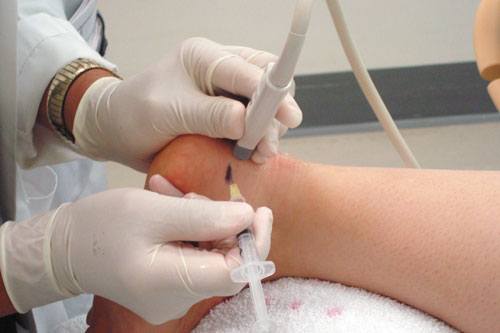
However, if these traditional treatment methods don’t work, the next best alternative is to get cortisol injections that can immediately minimize the compression in your foot’s nerve.
Getting Rid Of Foot Swelling And Pain – Top Home Remedies
Everyday ankle and foot pain can be quite common based on the type of shoes you wear and how much you move around. However, you can use various remedies on a daily basis for every day foot pain and relief. In light of this, mentioned below are some topnotch remedies:
Foot Massage
Sure, it is difficult to find the time to visit a spa for frequent foot massage. However, you really don’t have to go anywhere; you can always give yourself a nice, effective foot massage using an electrical foot massager that comes in a variety of functions and options.
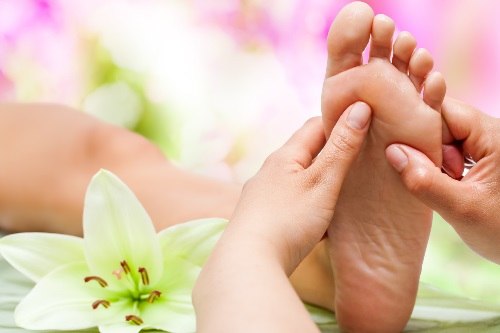
Foot massagers are designed to provide you with gentle massage and there are different settings and intensity levels you can use to sooth pain and discomfort. Every day massage on the side of foot can have numerous health benefits.
The nerves and arteries in your feet directly connect to different organs such as your eyes, liver, kidneys, heart and the brain. Massage your feet daily can help minimize the chances of different diseases and health complications.
Wear Compression Socks
Compression socks can be a good idea to curb your ankle and foot pain and are extremely effective for diabetic foot pain as well. These socks are specially made to minimize the chances of fluid collection in your feet as well as your ankles and can increase blood flow to the muscles of your legs. Compression socks are available at just about every drug store.
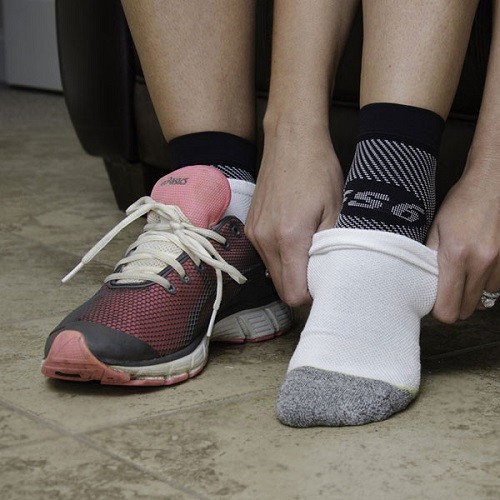
These socks are made in varying sizes and weights. For example, you can buy a pair of medium or heavy sized socks – but you have to ensure they don’t fit too tightly. Speak to your doctor and buy a pair that is best for your feet and legs.
Raise Your Legs
The best technique to reduce foot swelling and pain is to raise your legs on an ottoman. This will significantly help minimize the swelling in your feet. You can also try different yoga poses that entail elevating legs, for example, lying flat on the ground with your legs elevated and pressed gently against the wall.

Get Some Exercise
It is a truism that inactivity can cause a lot of lower back and foot complications. Standing in one place for a long time or sitting on the chair for extended periods can decrease blood flow to your feet, which can result in cramping, increased swelling and the occasional ankle twist. If you don’t want to lift weights, the best alternative is to go out for a swim every other day.
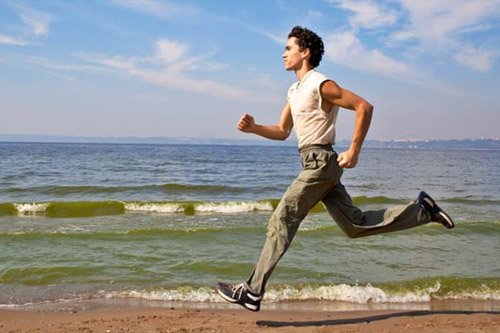
Lose Weight
Excessive weight can also affect the condition of your legs. The heavier you are the more stress and pressure you will be putting on your knees, ankles and feet, which can cause many problems in the long run.

Bottom Line
In all, these are some of the most common causes of pain in the ball of foot and pain on the outside of foot. However, with the mentioned remedies and treatments along with some exercise and restraint, you can have healthy feet for a long time.


